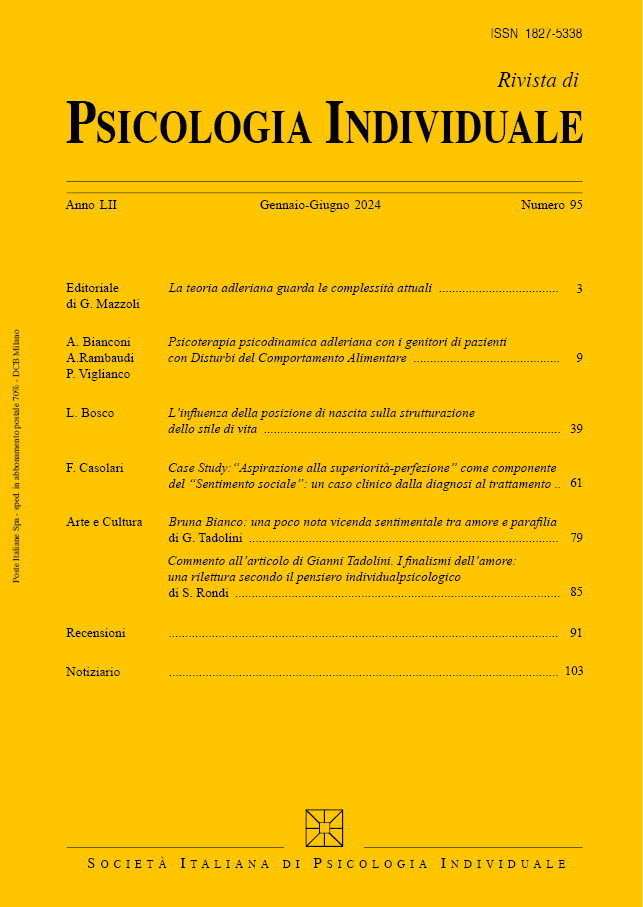PSYCHOTHERAPEUTIC DYNAMIC TREATMENT OF SUBJECTS WITH EARLY TRAUMAS
Keywords:
trauma, attachment, countertransference, relazione implicita condivisa, psicoterapia adleriana, attaccamento, controtransfert, mentalizzazione, relazione terapeutica, mindfulnessAbstract
Unlike in the past, countertransference is increasingly becoming a necessary, indispensable tool for comprehending patients, particularly patients with serious personality disorders and early traumas, which are the cases we most frequently encounter today. Nowadays the image of a less neutral, more participative analyst is emerging who can, in certain cases, ‘act’ within the setting (enactment), even revealing and bringing into play parts of himself (self-disclosure), in concordance with a vision of human beings as organizers of experiences and as experiential subjects. In the most critical moments of a psychodynamic psychotherapy work, particularly with traumatized and/or structurally serious patients with whom there is a risk of continual phases of stalemate or negative therapeutic reactions, psychotherapeutic work is only possible if the analyst is capable of bringing into play, or “revealing”, some parts of him self in the relationship with the patient, as in ‘feeling to encourage feeling’, ‘thinking to encourage thought’, ‘speaking to encourage speech’, and ‘recounting to encourage recounting’. When the therapeutic relationship structures a corrective emotional experience of suffering, this new experience simultaneously produces a transformation of the implicit traumatic memory, linked to primary attachment, and intra-psychically restructures the patient’s conscious and unconscious associative circuits and tie modules. Some mentions about trauma and its psychophysiology. A clinical example will be presented






